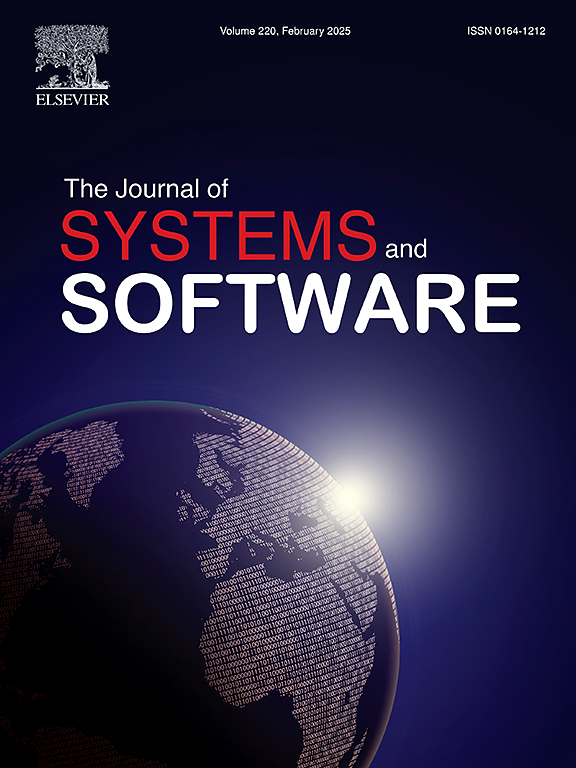An enhanced transformer-based framework for interpretable code clone detection
IF 3.7
2区 计算机科学
Q1 COMPUTER SCIENCE, SOFTWARE ENGINEERING
引用次数: 0
Abstract
In software development, the replication of specific source code segments is known as code cloning. This practice allows reusing source code instead of developing these segments from scratch, enhancing software productivity. However, code cloning can introduce bugs, complicate code refactoring, and increase maintenance costs. Consequently, code clone detection (CCD) is an essential concern for the software industry. While various techniques have been proposed for detecting code clones, many existing tools generate a high ratio of false positives/negatives and a need for more contextual awareness. Therefore, this paper introduces CloneXformer, an innovative framework for code clone detection. The framework adopts a collaborative approach that harnesses multiple large language models for code understanding. The framework employs a preliminary phase to preprocess the input code, which helps the models understand and represent the code efficiently. Then, it captures the semantic level of the code and the syntactic level as it relies on a set of transformer-based models. Afterward, these models are finetuned to detect code clones with interpretable results that explain the detected clone types. Finally, the output of these models is combined to provide a unified final prediction. The empirical evaluation indicates that the framework improves detection performance, achieving an approximately 16.88 % higher F1 score than the state-of-the-art techniques.
一个增强的基于转换器的可解释代码克隆检测框架
在软件开发中,对特定源代码段的复制称为代码克隆。这种做法允许重用源代码,而不是从头开始开发这些部分,从而提高了软件的生产力。但是,代码克隆会引入bug,使代码重构复杂化,并增加维护成本。因此,代码克隆检测(CCD)是软件行业的一个重要问题。虽然已经提出了各种检测代码克隆的技术,但许多现有的工具产生了很高的假阳性/阴性比例,并且需要更多的上下文感知。因此,本文介绍了一种用于代码克隆检测的创新框架CloneXformer。该框架采用协作方法,利用多种大型语言模型进行代码理解。该框架采用了一个前期阶段来预处理输入代码,这有助于模型有效地理解和表示代码。然后,它捕获代码的语义级别和语法级别,因为它依赖于一组基于转换器的模型。然后,对这些模型进行微调,以使用解释检测到的克隆类型的可解释结果来检测代码克隆。最后,将这些模型的输出结合起来,提供统一的最终预测。经验评估表明,该框架提高了检测性能,比最先进的技术获得了大约16.88%的F1分数。
本文章由计算机程序翻译,如有差异,请以英文原文为准。
求助全文
约1分钟内获得全文
求助全文
来源期刊

Journal of Systems and Software
工程技术-计算机:理论方法
CiteScore
8.60
自引率
5.70%
发文量
193
审稿时长
16 weeks
期刊介绍:
The Journal of Systems and Software publishes papers covering all aspects of software engineering and related hardware-software-systems issues. All articles should include a validation of the idea presented, e.g. through case studies, experiments, or systematic comparisons with other approaches already in practice. Topics of interest include, but are not limited to:
•Methods and tools for, and empirical studies on, software requirements, design, architecture, verification and validation, maintenance and evolution
•Agile, model-driven, service-oriented, open source and global software development
•Approaches for mobile, multiprocessing, real-time, distributed, cloud-based, dependable and virtualized systems
•Human factors and management concerns of software development
•Data management and big data issues of software systems
•Metrics and evaluation, data mining of software development resources
•Business and economic aspects of software development processes
The journal welcomes state-of-the-art surveys and reports of practical experience for all of these topics.
 求助内容:
求助内容: 应助结果提醒方式:
应助结果提醒方式:


